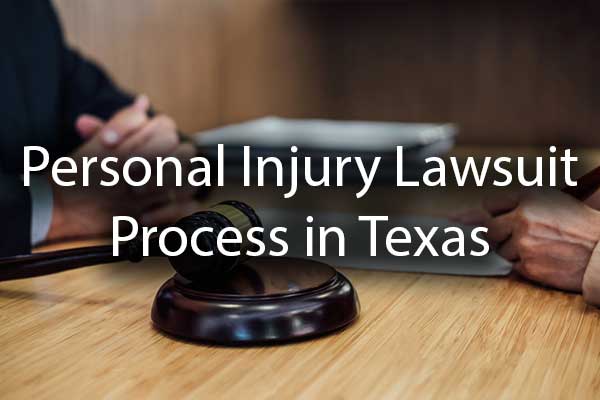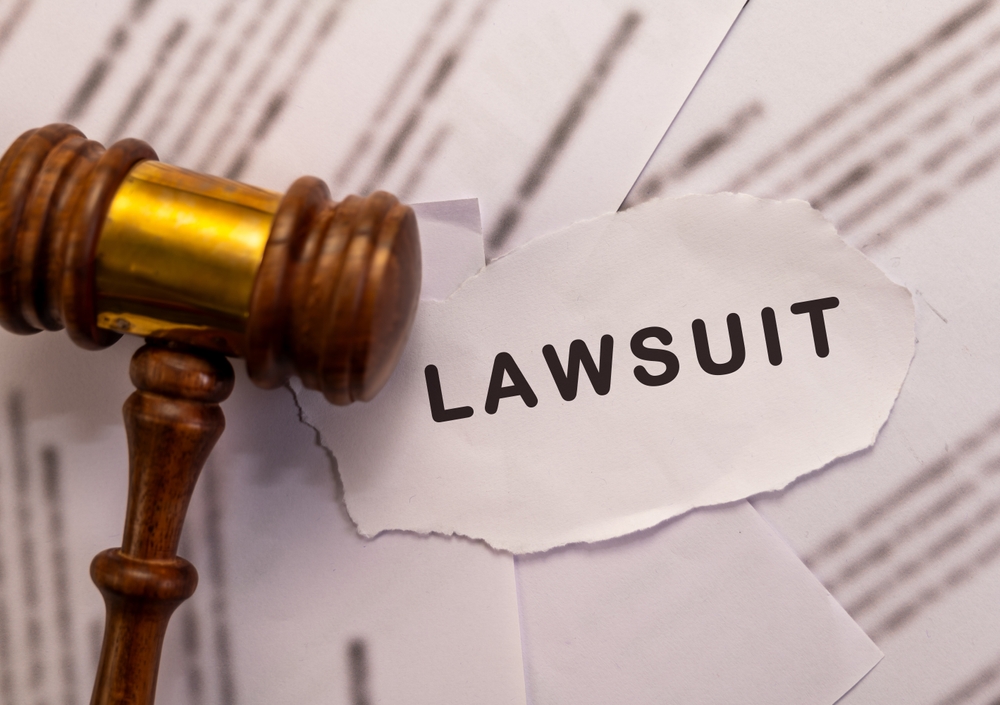
The personal injury lawsuit process is a series of formal steps within the civil justice system designed to hold a negligent party accountable and seek financial compensation for the harm they caused. While it can seem intimidating, the process is methodical, ensuring both sides have a fair opportunity to present their case.
Working with an experienced personal injury lawyer can make this process far less overwhelming. The personal injury lawsuit process is about more than legal procedures—it’s about seeking justice and the financial resources you need to rebuild your life. From gathering evidence to negotiating with insurance companies, each step plays a critical role in the outcome of your case.
Key Takeaways about the Personal Injury Lawsuit Process
- The personal injury lawsuit process begins long before a case goes to court, starting with an investigation and attempts to negotiate a settlement.
- Many personal injury cases are resolved through a settlement with an insurance company and never require a trial.
- A crucial step called “discovery” involves both sides formally exchanging information, including documents and sworn testimony, to build their cases.
- The statute of limitations in Texas generally gives an injured person two years from the date of the incident to file a lawsuit.
- Alternative dispute resolution methods like mediation are often used to help parties reach a mutual agreement and avoid a trial.
- If a case does go to trial, a jury will hear the evidence and deliver a verdict that determines fault and the amount of compensation, if any.
The First Step: Seeking Guidance After an Injury

After an accident, you’re often left with a flood of questions and uncertainties. Medical bills may be arriving, you might be unable to work, and the phone calls from insurance adjusters can be relentless. This is the point where many people decide to seek guidance to understand their rights and options.
The first step in the formal legal process is typically a consultation with a personal injury attorney. During this initial meeting, you can share the details of what happened without any obligation. It’s a chance to tell your story, ask questions, and learn whether you might have a valid claim.
Most personal injury law firms offer these consultations for free and work on a contingency fee basis. This is a straightforward arrangement: the attorney’s fees are a percentage of the final settlement or verdict, and you pay nothing up front or out of pocket. If there is no financial recovery, you owe no attorney’s fees.
This approach allows you to pursue justice without worrying about legal costs while you’re already dealing with the financial strain of an injury. It aligns your attorney’s goals with yours—a successful outcome for your case.
Stage 1: The Investigation and Evidence Gathering Phase

Once you decide to move forward, the first active stage of the personal injury lawsuit process begins: the investigation. Your legal team will start working immediately to preserve evidence and build a strong foundation for your claim. This is a meticulous process where every detail matters. The goal is to collect all the facts needed to prove that another party was negligent and that their negligence directly caused your injuries and damages.
A thorough investigation may include:
- Collecting official reports: This includes obtaining police or accident reports filed by officers at the scene.
- Gathering your medical records: All documentation related to your injuries, from initial emergency room visits to ongoing physical therapy and future treatment plans, is essential.
- Documenting the scene: Your team may gather photos and videos of the accident location, vehicle damage, and any contributing factors like poor road conditions or obscured signs.
- Interviewing witnesses: Speaking with anyone who saw the accident can provide crucial perspectives that support your version of events.
- Consulting with professionals: In some cases, it may be necessary to hire accident reconstructionists, medical professionals, or economic experts to provide professional opinions on how the accident happened and the full extent of your financial losses.
This comprehensive evidence-gathering is vital. It forms the basis of your claim and provides the leverage needed for the next stage of the process.
Stage 2: The Demand Letter and Negotiation
After a thorough investigation and a clear understanding of your total damages—including medical bills, lost wages, and pain and suffering—your attorney will typically prepare a demand letter. This is a formal, detailed document sent to the at-fault party’s insurance company. It lays out the facts of the case, establishes the other party’s liability, details your injuries, and makes a specific monetary “demand” for settlement.
This letter kicks off the negotiation phase. An insurance adjuster will review the demand and all the supporting evidence. They have a few options:
- Accept the demand and pay the full amount.
- Reject the demand and deny any liability.
- Make a counteroffer for a lower amount.
The most common response is a counteroffer, which begins a back-and-forth negotiation between your attorney and the insurance company. Your lawyer will advocate for your best interests, fighting against lowball offers and working toward a fair settlement that fully compensates you for your losses. Many, if not most, personal injury claims are successfully resolved at this stage.
It’s important to remember that this process happens under a deadline. In Texas, the law sets a time limit for filing a personal injury lawsuit, known as the statute of limitations. For most personal injury cases, you have two years from the date of the injury to file a lawsuit. If negotiations drag on and this deadline approaches, it becomes necessary to move to the next stage to protect your rights.
When Negotiation Fails: What is The Personal Injury Lawsuit Process in Court?
If the insurance company refuses to offer a fair settlement, the next step is to file a lawsuit and take the matter to court. While this may sound daunting, it is a structured and organized part of the legal process designed to resolve disputes formally. For many people in Tarrant County, this means their case will be filed at the Tarrant County Civil Courts Building in downtown Fort Worth.
Filing the Petition
The lawsuit officially begins when your attorney files a “Petition” (also called a “Complaint”) with the appropriate court. This legal document formally outlines your claims against the person or company you believe is responsible for your injuries.
- The Plaintiff: This is you, the injured party who is filing the lawsuit.
- The Defendant: This is the party being sued—the at-fault driver, a property owner, or a company.
Once the petition is filed, a copy must be legally delivered to the defendant, a step known as “service of process.” The defendant then has a specific amount of time to file a formal “Answer” with the court, responding to the allegations in your petition.
The Discovery Phase: Uncovering the Facts
After the initial court filings, the case enters a lengthy phase called discovery. This is the formal process governed by the Texas Rules of Civil Procedure where each side has the opportunity to “discover” the evidence the other side has. The purpose of discovery is to ensure that all parties have access to the relevant facts so there are no surprises if the case goes to trial.
Common tools used during the discovery phase include:
- Interrogatories: These are written questions sent to the opposing party, which they must answer in writing and under oath.
- Requests for Production of Documents: Each side can request relevant documents from the other, such as maintenance logs for a commercial truck, internal company emails, or phone records.
- Depositions: This is an in-person or virtual interview where lawyers ask questions of witnesses, including the plaintiff and defendant, who are under oath. Everything said is recorded by a court reporter, creating an official transcript.
The discovery phase can take several months or even longer, depending on the complexity of the case. It is often the most time-consuming part of the lawsuit, but it is also one of the most important for building a winning case.
Seeking Resolution Before Trial: Mediation and Settlement Conferences
Even after a lawsuit is filed, both sides are still encouraged—and often required by the court—to try and resolve the case without a trial. The most common method for this is mediation.
Mediation is a confidential meeting where the plaintiff, the defendant, their respective attorneys, and a neutral third-party mediator all come together. The mediator’s job isn’t to pick a side or make a decision but to help facilitate communication and guide the parties toward a mutually agreeable settlement. The mediator will often go back and forth between the two parties in separate rooms, discussing the strengths and weaknesses of each side’s case and exploring potential compromises.
Mediation is highly effective, and a vast majority of cases that reach this stage settle here. It offers several benefits over a trial:
- Control: You and the other party control the outcome, rather than leaving it in the hands of a jury.
- Certainty: A settlement provides a guaranteed result, eliminating the risks and uncertainties of a trial.
- Efficiency: It is generally faster and less expensive than proceeding all the way to a trial.
Settlement conferences with a judge can also serve a similar purpose, providing another opportunity to resolve the case before a trial becomes necessary.
The Final Stage: What Happens at a Personal Injury Trial?

If all attempts at settlement fail, the case will proceed to trial. While TV shows often dramatize courtroom proceedings, a real trial is a structured and methodical process. It is the final opportunity for both sides to present their evidence and arguments to a judge and jury. The national statistics on civil trials show that only a small fraction of personal injury cases actually go this far. According to the U.S. Department of Justice, less than 3% of tort cases are resolved by a trial.
The typical stages of a personal injury trial include:
- Jury Selection: Called “voir dire,” this is where attorneys from both sides question potential jurors to select a fair and impartial panel to hear the case.
- Opening Statements: Each attorney gives the jury a roadmap of their case. They explain what they intend to prove and what evidence they will present.
- Presenting Evidence and Witness Testimony: This is the core of the trial. Your attorney will call witnesses to testify, present physical evidence, and cross-examine the defendant’s witnesses.
- Closing Arguments: After all the evidence has been presented, the attorneys summarize their case, highlight the key evidence, and argue why the jury should rule in their client’s favor.
- Jury Deliberation and Verdict: The jury is given legal instructions by the judge and then goes to a private room to deliberate. They discuss the evidence and reach a decision, which is called the verdict.
If the jury finds in your favor, they will also determine the amount of financial compensation, or damages, to award you. While a verdict often marks the end of the personal injury lawsuit process, it’s possible for the losing party to file an appeal, which can extend the timeline further.
Personal Injury Lawsuit FAQs
Here are answers to some common questions people have about the journey through a personal injury case.
The timeline for a personal injury case varies greatly. A straightforward claim that settles before a lawsuit is filed could be resolved in a matter of months. However, a complex case that goes through the full litigation process and proceeds to trial could take two years or even longer to reach a final resolution.
Most personal injury cases settle out of court, so the majority of plaintiffs never have to testify at a trial. However, you will almost certainly have to give testimony in a deposition during the discovery phase. If your case does go to trial, your testimony will be a crucial part of presenting your case to the jury.
In Texas, you may be able to recover compensation for a variety of losses, known as damages. These can include economic damages, which have a clear monetary value, like medical bills and lost income, as well as non-economic damages, which are more subjective and cover things like pain and suffering, emotional distress, and loss of enjoyment of life.
Texas follows a “modified comparative fault” rule with a 51% bar. This means you can still recover damages as long as you are found to be 50% or less responsible for the accident. However, your total compensation award will be reduced by your percentage of fault. For example, if you are awarded $100,000 but found to be 20% at fault, your award would be reduced by $20,000, and you would receive $80,000.
Let Us Guide You Through the Process

After a serious accident, your focus should be on healing, not on fighting with insurance companies or figuring out complex legal deadlines. Having a dedicated advocate in your corner can make all the difference.
If you or a loved one has been injured in Arlington or anywhere in Tarrant County, the team at Branch & Dhillon, P.C. is here to help. We are passionate about fighting for the rights of the injured and will handle every aspect of your case with the care and determination it deserves.
Contact us today at (817) 533-3430 or through our online form for a free, no-obligation consultation to discuss your case and learn how we can help you on the road to recovery.

